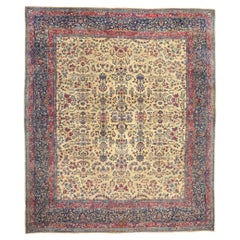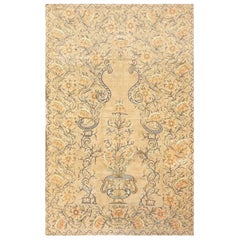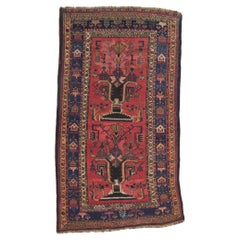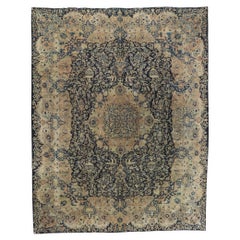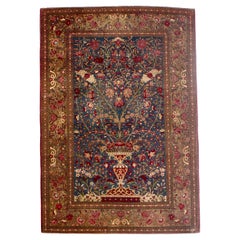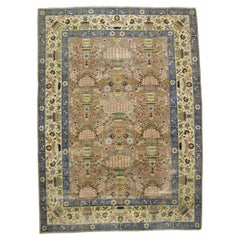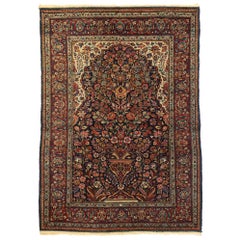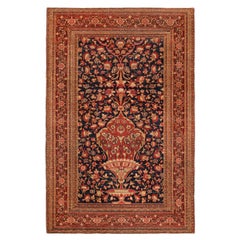Persian Antiques Vases
Early 20th Century Persian Kirman Persian Rugs
Wool
Antique 19th Century Persian Other Persian Rugs
Silk
Early 20th Century Persian Modern Persian Rugs
Wool
Early 20th Century Persian Kirman Persian Rugs
Wool
Early 20th Century Persian Kashan Persian Rugs
Wool
Antique Late 19th Century Persian Persian Rugs
Wool, Cotton
Early 20th Century Persian Persian Rugs
Wool
Early 20th Century Persian Kashan Persian Rugs
Wool
Vintage 1910s Persian Persian Rugs
Wool
Antique Late 19th Century Persian Tabriz Persian Rugs
Wool
20th Century Persian Rugs
Wool
Antique Early 1900s Asian Islamic Vases
Ceramic, Earthenware
Early 20th Century Persian Sarouk Farahan Persian Rugs
Wool
Antique 19th Century Islamic Vases
Brass, Bronze
Antique Mid-19th Century Persian Islamic Vases
Earthenware, Ceramic, Pottery, Clay
Antique Early 1900s Persian Persian Rugs
Wool
Antique 1850s Vases
Silver, Brass
Antique Mid-18th Century Persian Moorish Vases
Terracotta
Early 20th Century Persian Tabriz Persian Rugs
Wool
Antique 19th Century Asian Islamic Bottles
Bronze
Early 20th Century Persian Kirman Persian Rugs
Wool
Antique 19th Century Vases
Bronze
Antique 19th Century Vases
Bronze
Antique 19th Century French Vases
Sterling Silver
Antique 19th Century Asian Persian Rugs
Wool
20th Century Persian Khorassan Persian Rugs
Wool
20th Century Persian Tabriz Persian Rugs
Wool
20th Century Persian Tabriz Persian Rugs
Wool
Antique Late 19th Century Indian Islamic Vases
Brass
Early 20th Century Persian Islamic Planters, Cachepots and Jardinières
Copper
Antique Late 19th Century Persian Islamic Bottles
Ceramic, Pottery, Stoneware
Vintage 1910s Persian Art Deco Sterling Silver
Gold Plate, Silver, Sterling Silver
Antique Late 19th Century Turkish Islamic Metalwork
Silver
Antique Late 19th Century Unknown Islamic Metalwork
Silver
20th Century Japanese Metalwork
Bronze
Vintage 1920s Persian Medieval More Carpets
Wool
Early 20th Century Persian Persian Rugs
Wool
Vintage 1920s Persian Islamic Persian Rugs
Wool
Antique Late 19th Century Asian Vases
Pottery
Early 20th Century Persian Tabriz Persian Rugs
Wool
Early 20th Century Persian Modern Persian Rugs
Wool
Early 20th Century Persian Tabriz Persian Rugs
Wool
Antique 1890s Persian Tribal Persian Rugs
Wool
Antique 19th Century Unknown Islamic Vases
Pottery
Early 20th Century Persian Kirman Persian Rugs
Wool
Vintage 1910s Great Britain (UK) Vases
Porcelain
Antique 18th Century Persian Moorish Vases
Terracotta
Antique Mid-19th Century Persian Vases
Ceramic
Early 20th Century Persian Tribal Persian Rugs
Wool
20th Century Persian Vases
Silver
Antique 19th Century Asian Vases
Silver, Bronze, Copper
Early 20th Century Persian Vases
Silver
Antique 1880s Persian Kirman Persian Rugs
Wool
Early 20th Century Persian Tabriz Persian Rugs
Wool
Early 20th Century Unknown Islamic Vases
Ceramic
Antique 1880s Persian Tabriz Persian Rugs
Antique 19th Century Asian Persian Rugs
Wool
Early 20th Century Asian Vases
Metal
Antique 17th Century Persian Islamic Jars
Ceramic, Earthenware
Early 20th Century Asian Metalwork
Silver
- 1
Persian Antiques Vases For Sale on 1stDibs
How Much are Persian Antiques Vases?
Finding the Right Rugs And Carpets for You
Good antique rugs and vintage rugs have made their way into homes across the globe, becoming fixtures used for comfort, prayer and self-expression, so choosing the right area rug is officially a universal endeavor.
In modern usage, “carpet” typically denotes a wall-to-wall floor cushioning that is fixed to the floor. Rugs, on the other hand, are designed to cover a specific area and can easily be moved to new locations. However, the terms are interchangeable in many parts of the world, and, in the end, it won’t matter what you decide to call it.
It’s well known that a timeless Persian rug or vintage Turkish rug can warm any interior, but there are lots of other styles of antique rugs to choose from when you're endeavoring to introduce fresh colors and textures to a bedroom or living room.
Moroccan Berber rugs are not all about pattern. In fact, some of the most striking examples are nearly monochrome. But what these rugs lack in complexity, they make up for in brilliant color and subtle variation. Moroccan-style interiors can be mesmerizing — a sitting room of this type might feature a Moroccan rug, carved wooden screens and a tapestry hung behind the sofa.
Handwoven kilim rugs, known for their wealth of rich colors and unique weaving tradition, are pileless: Whereas the Beni Ourain rugs of Morocco can be described as dense with a thick surface or pile, an authentic kilim rug is thin and flat. (The term “kilim” is Turkish in origin, but this type of textile artistry is practiced all across the Balkans, throughout the Arab world and elsewhere.)
When it comes to eye-catching floor coverings, the distinctive “medallion” pattern of Oushak rugs has two types of rounded shapes alternating against a rich red or blue background created with natural dyes, while the elaborate “star” pattern involves large eight-pointed shapes in diagonal rows alternating with diamonds.
If you’re looking for something unexpected, find a runner rug that pops in your hallway or on your stairs. Dig for dazzling geometric patterns in our inventory of mid-century modern rugs and carpets, which includes works designed by the likes of Swedish textile masters Märta Måås-Fjetterström, Marianne Richter and other artisans.
Carpets and rugs have been around for thousands of years. Prehistoric humans turned to animal skin, wool and fur to craft simple fabrics to soften hard terrain. A 2016 study suggests that "cave lions" were hunted for exactly this purpose, and that decorating your cave with their pelts may have conferred strength and prestige. Although many of these early textiles are still in existence, tracing their precise origins is difficult. Carpets quickly became such a valuable trade commodity that the weavings could easily travel far from their places of origin.
The oldest known carpet was found in southern Siberia. (It may have traveled there from Persepolis in Iran.) For the flat-weave floor rugs crafted by Native Americans, cotton was the primary material before sheep’s wool was introduced in the 16th century. In Europe, carpet-making was fundamental to folk art, and Asian carpets imported to European countries were at one time considered a precious luxury and not intended to remain permanently on the floor.
With the variety of area rugs and carpets rolled out for you on 1stDibs — a collection that includes traditional, modern, minimalist rugs and other coverings of all kinds — things will be looking up whenever you’re looking down.
- 1stDibs ExpertApril 5, 2022There are a few red flags you should look for in determining if you have an antique Persian rug. Firstly, check the fringe. Fringes on a Persian rug form from the end of warp yarns, and won’t be sewn on the back. Also check the colors. They should be crisp, with no bleeding of the dyes. Shop a collection of authentic Persian rugs from some of the world’s top sellers on 1stDibs.
 NazmiyalMarch 23, 2021The most expensive antique Persian rug ever sold in auction (so far) is $34,000,000. But the vast majority will cost under $100,000.
NazmiyalMarch 23, 2021The most expensive antique Persian rug ever sold in auction (so far) is $34,000,000. But the vast majority will cost under $100,000.- How do you identify an antique vase?2 Answers1stDibs ExpertAugust 17, 2021To tell if a vase is antique, look for a mark on the bottom of the vase either a NIPPON mark or an overmark over the original maker’s mark.1stDibs ExpertAugust 24, 2021The easiest way to identify an antique vase is to check for logos, artist's name or signature at the bottom. These marks may be painted, inked or inscribed. You can also check the edges to identify an antique vase — they are generally more smooth and polished than the rest of the piece. Find an extraordinary collection of antique and vintage vases and vessels on 1stDibs.
- 1stDibs ExpertApril 5, 2022The best way to identify an antique porcelain vase is to check for a maker’s mark. Gently flip the vase over and look for a signature or logo on the bottom. You may also find the name of the artist or designer. Old vases were also made in wood-based kilns, so an antique vase will likely have small imperfections such as coarseness, crackling or asymmetry. When in doubt, work with a certified appraiser to determine the authenticity of your vase. On 1stDibs, you’ll find a variety of expertly vetted antique porcelain vases.
- 1stDibs ExpertApril 5, 2022There are a few ways to tell the approximate age of a porcelain vase, including identifying the maker's mark. These are usually located on the bottom of the vase. The maker's mark can help you find the era of manufacture once you know the company or studio that produced the piece. Look for imperfections, which were inevitable with wood-fuelled kilns of the past but uncommon with modern gas-fuelled kilns. On 1stDibs, shop a collection of antique porcelain from some of the world's top sellers.
Read More
Hechizoo’s Original Sin Rug Tempts with Shimmering Copper, Tin and Bronze
Embroidered with snakes, turtles, birds and vines, it celebrates a dazzling natural world before the arrival of Adam and Eve.
Splashy Blooms Bud and Wilt in Artist Santi Moix’s Floral Rug
The colorful design captures the natural splendor of a backyard garden.
In South Africa, Rich Mnisi Is Taking Biomorphic Design to the Next Level
The rising fashion star is having his first solo show of furniture designs, at Southern Guild in Cape Town, and his far-out, snaking forms are like nothing you've ever seen.
The Artists and Designers behind Today’s Coolest Rug Collaborations
Top carpet companies are expanding the arena of artful floor coverings, seeking out creatives from other media and marrying their talents to textiles.
Tantuvi’s New Rugs Were Inspired by the Travertine Quarries of India and the Spanish Steps of Rome
The New York–based rug designers employ earthy colors and time-honored artistry in their creations.
We’re Going Gaga for the New Sasha Bikoff Rugs
The New York interior designer found inspiration in disco culture and astrology for her debut home collection.
Paradise Is Found Underfoot in These Majestic Persian Textiles
Persian garden carpets, with their timeless beauty and unmatched craftsmanship, have an enduring appeal.
12 Mesmerizing Moroccan-Style Interiors
With their rich layers, intricate patterns and elaborate lighting, rooms with a Moroccan influence are easy to spot.
